Buying Serama chickens or hatching eggs
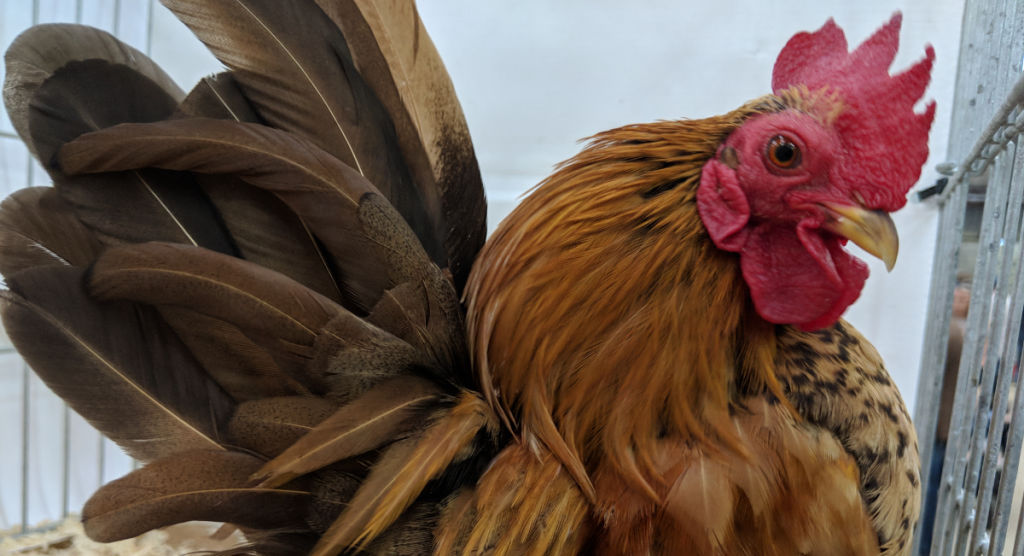
How do you choose Serama bantam hatching eggs?
It is easier for beginners to pick adult birds, though more experienced breeders may be able to see promise in an otherwise rather unpromising looking bird.
Starting with hatching eggs is fraught with dangers for the unwary or beginners.
The stance and attitude is as important as anything else when choosing a Serama.
You have no need to worry about colour.
How much do Serama cost?
You can expect to pay between $3 (£2.50) and $10 (£8) each for Serama bantam hatching eggs.
Day old Serama chicks will cost between $10 (£8) and $25 (£20) each depending on the type and quality of the bird.
An Adult Serama will cost between $50 (£40) and $100 (£80) each.
Buying Serama hatching eggs:
I am still seeing a lot of people falling for what is at best, exaggerations and at worst, all out lies of those selling Serama eggs.
Below: Serama eggs differ from bird to bird.
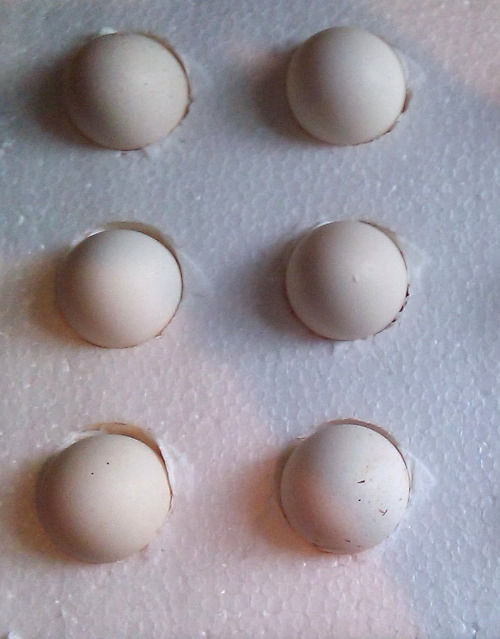
The Serama is a relatively good little layer considering its body shape and small size, my females at home lay usually every day or every other day when in full lay.
As the body size of the Serama varies vastly from A to C class weights as does the egg size.
Most larger A class birds lay small eggs which usually prove to be viable, B class birds can be productive breeders with C class birds usually laying the most eggs which in general are the largest and usually have higher hatch rates.
Below: Quality Serama are rare.
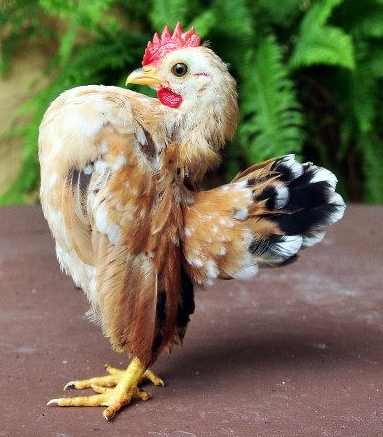
However the tiny A class birds often fail to lay or lay eggs too small to prove viable. This is not always the case, as I personally have had excellent results from females weighing as little as 235 grams. The same can be said of males as particularly small males are often infertile.
Serama bantam problems and lies you will come across:
- These eggs are from a specific colour of Serama: Serama come in over 2500 documented colours. They do not breed true which means that breeding two colours together does not result in any one colour offspring, and it is not uncommon to hatch out a clutch of chicks and have each one differently coloured. Therefore, my colours depend on what I hatch that year, and are purely random.
- These eggs are all from class A Serama: Class “A” Serama, especially roosters, are still quite rare. While they may have “All A’s”, it would probably because they only have a trio of birds total! However, most likely they stretching the truth. To get the A’s we have, we had to breed 3,000 birds over 3 years.
- We get 100% hatch rate from our eggs: Due to being an unstable land race and breeding for smaller size, etc., Serama do not enjoy this high a hatch rate. In our program where we are doing size reduction, we average about 70% with proven fertile birds and choice eggs. With the larger Serama (C or D class), one could expect 80-85%. If someone is claiming to achieve a higher rate, they are either telling a bit of a fib or they are selling crossbreeds.The truth here is you are likely to be lucky to get a 50% hatch rate from purchased eggs.
- All our Serama are show quality or from champions: Serama are very new and most flocks are poor and unstable. While some small public groups hold shows, the birds “winning” them are generally poor. This will improve as time goes on and the Serama standard is accepted, but right now, it is being used by people trying to take the unsuspecting buyer for as much money as possible.
Choosing Serama eggs for hatching:
- It is always advisable to hatch Serama eggs which weigh between 18g and 24g.
- Never incubate deformed eggs.
- Incubate the cleanest eggs but do not wash them as this reduces viability.
- Avoid setting eggs from birds who are undergoing treatment as fertility/viability will be low.
- Check eggs for cracks or flaws etc.
- Eggs which appear mottled or opaque are often unviable.
- Soft eggs are not viable
Have your incubator disinfected, at the correct temperature and calibrated and running before you get your eggs. Hatching eggs have about 7 days of storage time during which they are very likely to hatch. After that, Hatchability declines exponentially.
As soon as your eggs arrive, place them in a 60 degrees Fahrenheit room and leave for 10-12 hours. This settles the egg after vibrations from travelling and allows the temperature to stabilise.
Please be very careful when unwrapping your eggs, to prevent them from breaking. It is normal for a few specks of debris to be on the egg. DO NOT wash the eggs as this will remove the protective coating from them.
After settling, all you should have to do is place the eggs in the incubator. If you have a still air incubator, you should be incubating at 101 degrees Fahrenheit. If you are using a forced air incubator, incubate at 99.5 degrees.
Please thoroughly read your instruction manual for your incubator and refer to it during hatching. You should keep the humidity level at 60-65 percent for the first 18 days of hatching, and change it to 70-72 percent for the last three days. I hope you have great success, for any questions please email me. for any questions please email me.
If you have questions about what Serama look like, check out my Ayam Serama Pictures page. There you'll find lots of Serama Pictures.
Stock selection and choosing your Serama chickens:
When selecting birds always choose healthy specimens. A healthy bird will usually display a healthy redness to the comb & face, though young stock may not have achieved this yet and can be paler.
Below: A quality Serama cockerel.
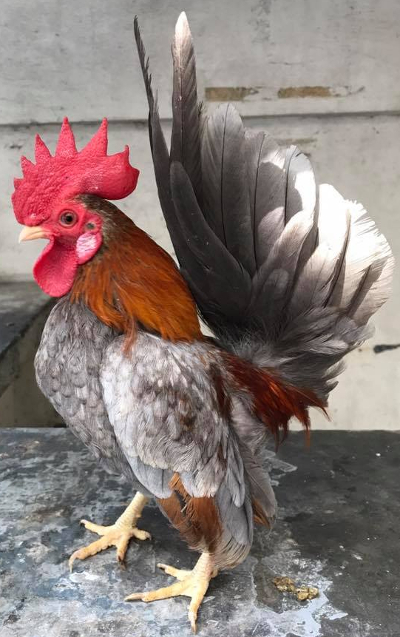
Do not purchase birds with purple tinges to the face or comb as this can be indicative if underlying illness. Select active birds who appear clean & well groomed, as a bird who is sick will often look tatty. Do not confuse sickness with natural moulting though.
Ensure the birds eye's and and nose are clean & clear of any crusting, swelling or discharge. Odour plays a huge part in selecting stock, birds with an extremely foul odour around the vent or face are to be avoided at all cost as these can be indicative of internal infections or the severe illness mycoplasma.
Ensure that the birds appear well looked after, clipped beaks & nails etc. Ensure the housing is clean and that none of the other birds appear unwell. Ask the seller of their worming & parasite treatment routines.
Check your birds legs for deformities, blisters, scabs etc, avoid birds with any form of leg problems as if a bird can't walk then it cannot live let alone breed or produce useful offspring.
The wry tail seems to be an increasing problem in Serama with many specimens displaying this serious fault being exhibited at show The Serama standard states that the wry tail is a serious fault, this means such a bird is not suitable for exhibition purposes.
Wry tail is deemed by the Poultry Club of Great Britain to be a skeletal deformity and states in the Poultry club standards book that birds displaying such deformity should be passed or penalised by a judge should they be encountered at exhibition, meaning that the bird should not be allowed to be placed in the top rankings on the show bench over birds who do not posses such deformity.
The wry tail is hereditary therefore such birds displaying the fault should not be bred from. In short birds with wry tails are only suitable as pets. Avoid such birds when purchasing stock regardless as to the severity of the wryness of the tail (Remember: wry tail is still a fault and is still hereditary whether it is minor or severe), it is also wise to avoid lines which have occurrences of wry tail as it is passed through generations, a bird from a line which has repeated wry tail incidences may not display the fault but may be a carrier of the responsible gene. Such a bird may pass the genetics for this deformity on to its offspring.
Check that beaks are straight and not crooked, over or under shot. Beak deformities are considered serious faults by the PCGB. Beak deformities can cause problems with feeding so birds with beak faults must be avoided.
An undershot beak.This is a serious fault, though not usually the cause of eating problems unless it is particularly long. Though may be hereditary. Avoid when selecting stock.
A severely deformed beak. This is likely to cause eating difficulties, in which case it is sad to say but such birds should be humanely euthanize to prevent suffering. Never buy a bird, no matter how healthy it may otherwise seem with such a deformity.
An over grown beak. Such a beak is not a deformity and will not breed through. It has simply been allowed to grow too long and has not been regularly clipped. Birds can die of starvation if their beaks are not kept trim. While this bird is probably healthy and with a clipped beak could possibly be a good bird and sound breeder, my advice is not to buy from a seller who is prepared to sell birds in such a neglected state.
If the seller is not prepared to perform simple tasks such as beak clipping, then it is unlikely that the birds will have been kept in good conditions, treated for parasites or taken much care of them during their lives. I would avoid such a bird to be on the safe side.
Ensure combs are straight & single with 5 serrations (though 4 or 6 serrations on a neat comb with an overall nice shaped, quality bird will be tolerated & can be bred out though sensible pairing).
Below: A good comb, they are rarely perfect.
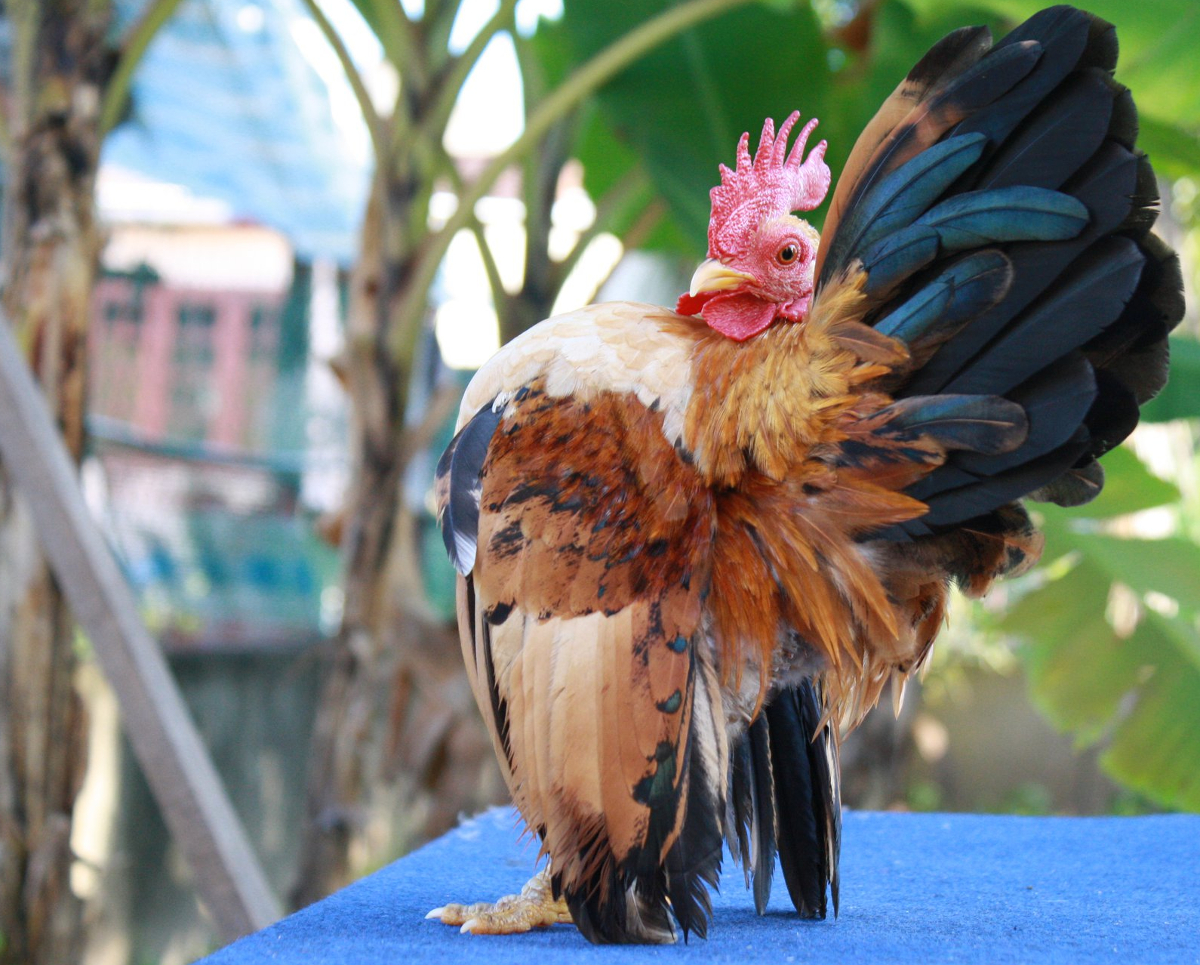
Ensure combs are not buried within the head, & do not have side sprigs, fish tails or flop to one side etc. Ensure wattles are even, smooth & free of nodules or creases/folds etc.
A beautiful comb displaying even serrations, good height and of course is tending towards flyaway type (slightly over shooting the back of the head with a slight lift to the blade). This is an ideal comb. Also the wattles are of a good standard, being free from folds or creases and of a neat size. Earlobes are also neat, free from over feathering and free of creases or folds.
Check the wings for splits (a gap between the primary & secondary wing feathers) do not confuse this with a missing feather due to moult. The easiest way to check for this is to count the feathers and should there be the correct amount of feathers (there being 15 secondary feathers & 10 primary feathers) but there still being a gap then there is a problem which is hereditary and must be avoided.
The above image shows the split wing fault and how it appears from above when the wing is fully extended.
Check that toes are also straight & not crooked. Ensure that the birds have 4 toes & no more or less. The UK standard states that Serama should have clean legs, meaning there must be no feathering on the legs or toes.
Check the feet and legs of the bird as a birds ability to walk has a massive impact on its breeding and show potential. Crooked toes can lead to lameness, disability and even infertility if the male has deformed feet he may not be able to tread a female as their grip may be affected.
Crooked toes is sometimes caused by humidity fluctuations or other problems on hatching though can be a genetic fault. A bird with such a fault is not suitable for exhibition purposes. If this is not a hereditary fault then breeding is still a prospect for such a bird, provided the bird can function normally without, pain or hindrance.
The fault know as "Duck foot" is hereditary and highly undesirable. This is not only unattractive but detrimental to the overall stance of the bird as balance is affected. Such birds are not suitable for breeding or exhibition as the standard for the British Serama club declares this to be a serious fault, meaning that a bird poses sing this fault would not be placed at show.
While not a serious fault, overly splayed toes are not ideal for the breed as they will cause reduced balance. Such a fault is not really noticeable and birds possessing this fault may be bred from with caution, pairing to a bird with no such fault. If this fault is not strikingly noticeable a bird possessing it may still be exhibited successfully.
Serama although small are very muscular and powerful considering their tiny stature. As such they should have a good thickness to their legs. Legs being too fine as shown below are not desirable in the breed. Legs being too long is also deemed a fault.
As was stated above Serama's legs should not be overly fine, but they must not be too thick either. See the diagram below showing the comparison between the short thickened legs of the Japanese bantam (right) and the correct leg thickness and length of the Serama (left)
The Serama is in general a slow maturing breed, with most specimens reaching their true adult shape at approx 18 months. Though some lines mature slowly others may mature more quickly, while some birds may tend to mature at a faster or slower rate to their siblings. When purchasing birds it's best to go to the breeder's home, and view the birds in their own environment.
This way you can see the birds moving in a relaxed state and make better judgement as to whether they will be of use in breeding or for showing or if selecting for pets you can select a bird with a good nature, who enjoys human interaction etc.
A nervous bird will often squat and fail to show it's true potential. Another plus to visiting the breeders home is that you can view the parent or sibling stock to get a rough idea of what your birds may turn out like.
Always ensure that the birds seen at the breeders home are in good healthy condition and have spacious clean housing, in the case of unhealthy birds or birds housed in poor conditions, do not purchase birds as these too, although they may appear healthy could be harbouring a disease.
Avoid purchasing from a breeder who will not allow a home visit, this is usually because they have something to hide.
Be very careful if purchasing birds just by looking at pictures on the internet, as I personally have been caught by such a scam and ended up with poor quality birds.
When it comes to picking adult birds for breeding or showing the points to consider are as this image shows.
Larger birds of B size make better breeding birds while smaller birds of A size if they are of good type make for better exhibition birds as they can sometimes be poor breeders, though this is not always the case. Never buy a bird of poor type just because it is small as type is always the most important factor.
Always avoid birds which do not conform to the required standard even if the breeder claims that they have "show parentage" or have "pedigree". If in doubt at all to the quality or legitimacy of the birds offered then walk away, do not spend vast sums of money if you are not 100% sure that you are happy with what you are buying.
Buying chicks is always a gamble, as you cannot see how they will turn out. If you decide to buy chicks always ensure you see the parent stock. If they are poor quality then the chances are their chicks will be too.
